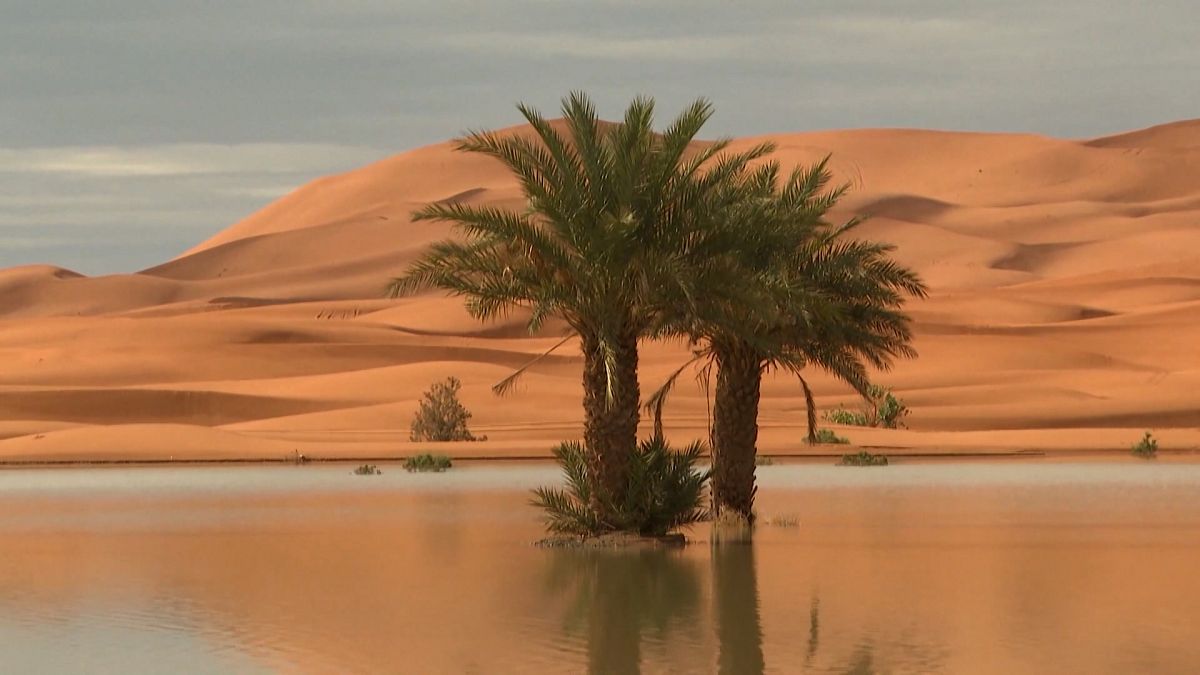A recent storm in Morocco has replenished dried-up lakes, attracting migratory birds and promoting the growth of new plants. This natural phenomenon occurs during seasonal rains, but prolonged droughts have previously dried up these bodies of water. Meteorologists believe that an increase in humidity from evaporation may lead to more frequent storms in the future, potentially altering the climate of this desert region.
The recent storm in Morocco not only caused loss of life and significant damage but also had a positive impact on the environment by refilling dried-up lakes. These lakes are essential for supporting biodiversity in the region, providing habitats for migratory birds and promoting the growth of new plants. While this natural phenomenon occurs during seasonal rains, prolonged periods of drought have dried up these bodies of water in the past, limiting their ecological function. The replenishment of these lakes after the recent storm is a welcome change that could help restore the region’s ecosystems.
The refilling of dried-up lakes in Morocco has attracted migratory birds, creating new opportunities for birdwatching and wildlife observation in the area. These lakes serve as important stopover points for birds traveling long distances, providing them with essential resources such as food and water. The presence of migratory birds also indicates the health of the ecosystem, as they rely on these habitats for survival. The recent storm that refilled the lakes has not only benefited the environment but also provided new recreational opportunities for nature enthusiasts.
Meteorologists predict that an increase in humidity from evaporation could lead to more frequent storms in the region, potentially changing the climate of this desert area. While Morocco is known for its dry climate and limited rainfall, the recent storm serves as a warning of potential climate shifts due to changing environmental conditions. The refilling of dried-up lakes and the occurrence of more frequent storms could have long-term implications for the region’s ecosystem and the communities that depend on it. It is important to monitor these changes and take steps to adapt to the evolving climate patterns to mitigate potential risks.
The recent storm in Morocco serves as a reminder of the dynamic nature of the environment and the importance of preserving natural resources for future generations. The refilling of dried-up lakes after the storm is a positive development that highlights the resilience of ecosystems in the face of natural disasters. However, it also underscores the vulnerability of these ecosystems to prolonged droughts and changing climate patterns. By understanding the interactions between weather events and environmental processes, we can better prepare for and adapt to future challenges in a rapidly changing world.
In conclusion, the recent storm in Morocco that refilled dried-up lakes has had both positive and negative impacts on the region’s environment. While the replenishment of the lakes has benefited biodiversity and provided new opportunities for wildlife observation, the occurrence of more frequent storms due to increased humidity could pose risks to the ecosystem and local communities. It is essential to monitor these changes closely and take proactive measures to mitigate potential threats and safeguard the region’s natural resources. By promoting sustainable practices and conservation efforts, we can help protect the environment and ensure its resilience in the face of environmental challenges.










